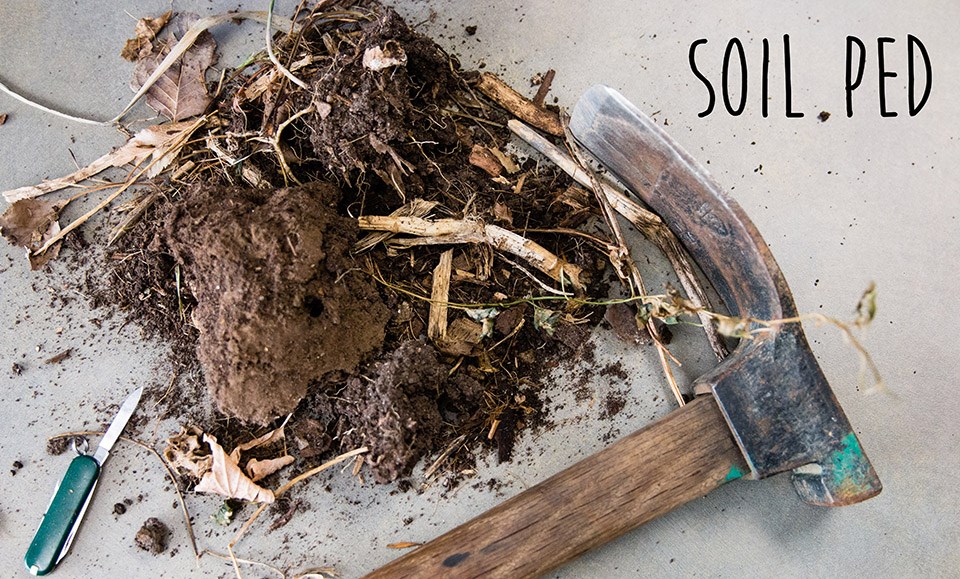Last updated: March 8, 2018
Article
#Sciencedeskdigs: Soil Ped

NPS Photo/ M.Reed
What is it?
This is a soil ped, which is a natural aggregation, or clumping of soil. You can interpret some things about the ecosystem it came from by the color, texture, roots, and pores present in the ped. For example, the color indicates the amount of organic matter or types of chemicals there are in a soil. This ped’s texture is sandy, but I can also feel that it also contains silt and clay. The number of roots and pores indicate a healthy amount of biological activity. From this kind of information, I could deduce what the land was used for in the past and whether or not it needs some type of treatment to make it functional.
For example, soils found in Cuyahoga Valley National Park were thick clays that lack any clear organic matter accumulation or openings for water to drain through. Grass roots I found there had unnatural right hand turns where they hit this very dense layer, which limits their ability to accumulate nutrients and water for plant growth. In order to get plants with deep roots to grow park managers will need to break up this soil. After the soil is broken up and those plant roots become a food source for soil organisms, we may need to do more detailed analyses in the lab to understand what other pieces, like nutrients or beneficial organisms, of the soil puzzle are missing.
While I have access to great information for science reports and databases, I still find it important for me to dig my hands into the dirt to make that information real!
Describe your workspace in one word.
Layered

NPS Photo/ M.Reed
